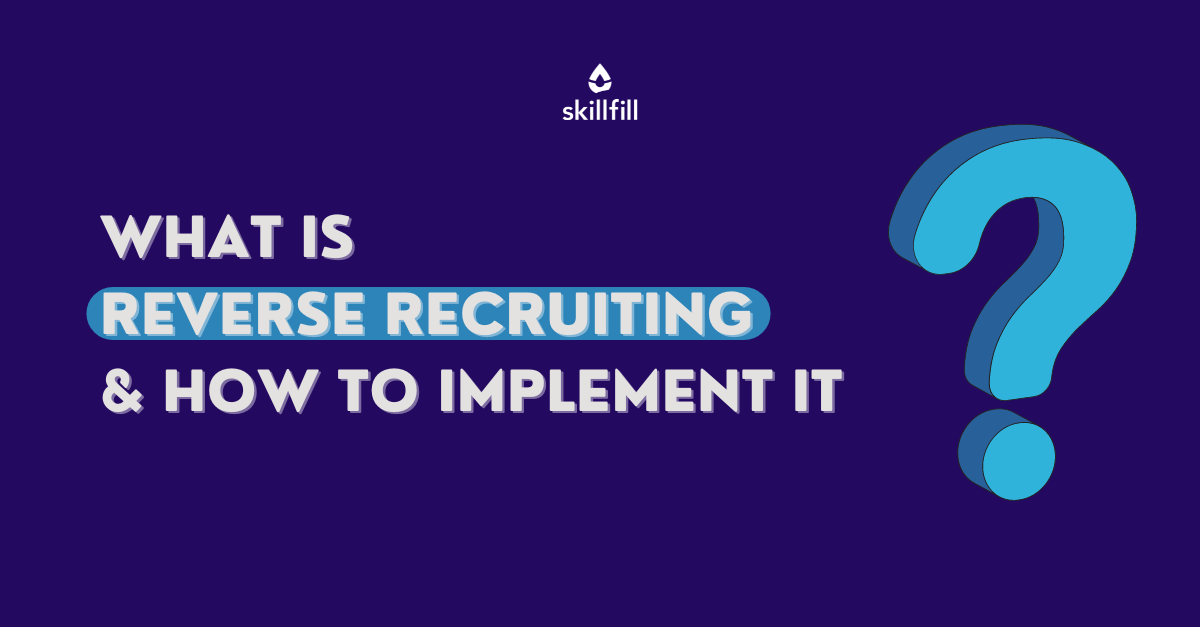In today's competitive job market, finding the right talent can be a difficult and time-consuming...
What is Reverse Recruiting and How to Implement it
In our attempt to always bring you new and innovative ideas to attract the best tech talent, today we uncover a new concept. It fits very well the market we are currently at, where job seekers have more options and higher expectations.
Today, we will discover the concept of Reverse Recruiting – a powerful approach that allows companies to proactively attract the best candidates instead of waiting for them to apply.

What is Reverse Recruiting?
Reverse Recruiting, also known as inverse recruiting, is a recent and unconventional approach in the talent acquisition world. It turns challenges the traditional hiring methods, by placing in the hands of job seekers the power to proactively approach and engage organizations.
For Reverse Recruiting to work, ensure that some cornerstones are in place:
- Candidate-Centric Approach: it is crucial to put the candidates' aspirations, goals, and desires at the core of the recruitment process. It will help you to focus even more on their needs, making them happy.
- Transparency: this is one of the most important aspects! For the process to work smoothly and to deliver effective results, create an environment where both the team and the candidate showcase their personalities, desires, interests and motivations. It will help to set clear expectations, and to align all the parties.
- Openness to Authentic Engagement: since Reverse Recruiting is based on the concept of candidates contacting companies, organizations need to create mechanisms to make it easier! By encouraging job seekers to contact with your organization, you will remove the barriers that stop candidates from sharing their needs, skills and desires.
Understanding the Benefits of Reverse Recruiting
1. Tapping into Passive Candidates
Traditional recruiting methods focus on active job seekers who are actively looking for new opportunities. However, many highly skilled candidates are not actively job hunting but may consider a better offer if it comes their way. Reverse recruiting allows you to reach out to these passive candidates, significantly expanding your talent pool.
2. Enhancing Employer Branding
A strong employer brand is essential for attracting top talent. Through reverse recruiting, you can showcase your unique company culture, values, and commitment to employee development, creating a compelling brand image that resonates with potential candidates. It will help you to show that your organization is open-minded, approachable and has a forward thinking!
3. Reducing Time-to-Hire
The traditional recruitment process can be time-consuming, involving multiple rounds of interviews and assessments. Reverse recruiting helps to speed up the hiring process by keeping a pool of pre-qualified candidates, reducing the time it takes to fill critical positions. By using the pool of talent you keep, you will reduce the time reviewing CVs, reading Cover Letters or conducting initial screenings!
4. Improving Employee Quality and Retention
By proactively seeking out top talent, you ensure you are hiring candidates with the right skill sets and cultural fit. Since you have been having multiple iterations with your pool of talent, you already know which profile fits better into which team and position, and also what are the requirements and motivations of the candidates! This results in higher employee satisfaction and lower turnover rates, leading to increased productivity and overall organizational success.
Implementing a Successful Reverse Recruiting Strategy
1. Identifying Your Target Candidates
The first step in reverse recruiting is to define the ideal candidate profiles for your company's various roles. Conduct in-depth research to understand the skills, and traits that align with your organization's culture and goals.
2. Building an Engaging Career Site
Your career site is the centerpiece of your reverse recruiting strategy. A visually appealing and user-friendly website that highlights your company's values, employee testimonials, and growth opportunities, increases the possibility of candidates reaching out to you! Use captivating content to engage potential candidates and incentivize them to take action.
3. Leveraging Social Media
Social media platforms provide an excellent opportunity to connect with potential candidates. Share engaging content, job openings, and company updates across various social channels. Utilize relevant hashtags and target your posts to reach your desired audience effectively. Promote your current employees to share on social media how it is to work at your organization, so that future candidates resonate with them! If you want to know how to use Twitter to leverage your sourcing efforts, check this article.
4. Utilizing Talent Analytics
Leverage data and talent analytics tools to identify potential candidates who match your ideal profiles. Analyze their behavior and preferences to create targeted outreach strategies.
Conclusion
Reverse recruiting is a modern approach that enables companies to attract top talent proactively. By understanding the benefits and implementing a well-crafted strategy, you can stay ahead of the competition and secure the best candidates! Embrace the power of reverse recruiting today!



